MMOs are filled with things to consider when a new entry comes out, given the broad gameplay with different facets that appeal to different people. Star Wars: The Old Republic is no different, and it can just as easily be described using the same vocabulary that you would use while talking about any other modern MMO. While the game doesn't reinvent the genre, the presentation is almost as though someone took those puzzle pieces and decided that they could fit together in a better way. The resulting MMO is a mix of gameplay mechanics that have been cleaned up and streamlined, as well as solid story lines cast against the backdrop of one of the most beloved franchises of all time.
There are many similarities that one can make with the current genre king, World of Warcraft, which has defined the genre boundaries for the better part of a decade. Nearly all of the MMOs released afterward have tried to emulate its mechanics with varying degrees of success. The Old Republic's strength isn't one measured in how far away it can place itself from the genre king, but rather in how much it has built using that same material as a foundation. The game is standard modern MMO fare, with plots and a level of polish usually reserved for single-player experiences. Bioware is no stranger to epic story lines, and its experience in that arena is just as apparent here as it has been in any of its other releases to date.
Taking the franchise hitch off for now, The Old Republic can be broken down into the expected MMO archetypes. The game features two factions, the Republic and the Empire, vying for dominance over the other in a galactic civil war only temporarily paused by a treaty that is as thin as the paper on which it was drafted. Each faction is broken up into four classes, which from a very macro perspective are essentially mirrors of the other side. The Republic's Jedi Knight, Jedi Consular, Smuggler and Trooper are all mirrors of the Empire's respective Sith Warrior, Sith Inquisitor, Imperial Agent and Bounty Hunter classes, respectively. Regardless of which class you choose, each can specialize into an advanced class at level 10, which is really what defines the class. For instance, the Imperial Agent can either become a Sniper or an Operative, a permanent choice that leads the class into either being a ranged damage per second (DPS) class or a healer.
There are some interesting changes to the standard MMO archetypes of DPS, healers and tanks roles. Most tanks and healers are capable of causing passable damage, so they aren't relegated to performing just the one role. That's not to say that their damage will outpace a class dedicated to it, but no classes are especially shoehorned into any role. Further changing up the standard archetypes is how tanking is now either a melee or a ranged affair, depending on the class in question. For instance, a Republic Trooper with the advanced class of Vanguard is a ranged tank capable of positioning itself at range while still keeping aggro on the batch of enemies faced, while the Sith Warrior in the Juggernaut advanced class has more standard tanking gameplay composed of getting within melee range of those on whom you want to keep aggro. The classes escape the standard problem of being pigeonholed, and each has mechanics to differentiate itself from the other.
As your character levels, starting at level 10 and ending at the cap of 50, you gain one talent point per level, and it can be spent on three talent trees. This system shouldn't seem any different to World of Warcraft veterans, as it functions almost exactly the same. Each tree is composed of a series of tiers in which you must spend at least five points in the preceding tier to unlock the next one. Each is named differently but has a purpose, such as damage or healing, next to it in parentheses. Spending points here is one of the primary methods of customizing your character.
Another big way that you will build up your character is via the gear that he or she uses, and at first glance, this is another area where The Old Republic doesn't differ much. Your starting gear is replaced by new gear with better stats, which also may or may not match your outfit and makes your fearsome avatar look it stumbled drunkenly through a local thrift shop. The game changer comes in the form of orange items, which are pieces of gear that are little more than templates, and the stats are based on parts that you add, such as armoring, barrels, crystals, enhancements, hilts and mods, with each part adding stat bonuses to the item on which it is slotted. It is possible to find a piece of orange gear at level 10 that you really like and decide that is the gear that you will proudly wear for the rest of the game. Simply update the parts contained within as you level, and it can easily outclass any of the quest rewards or random drops. The result is that with few exceptions, you can pick a look for your character and stick with it, which addresses the "clown armor" issue found in many MMOs and allows you to largely customize your character's appearance.
Interacting with NPCs is a given when it comes to picking up and completing quests, and your interaction with them is a back-and-forth conversation in which every quest giver — as well as your character — is fully voiced. The voice-over cast encompasses a significant depth of talent composed of many veteran Bioware voice actors as well as some relatively fresh voices. Additionally, quests are usually backed by the current plot thread of the planet you are on, which makes listening to them a relevant and enjoyable experience — at least the first time. You often get a choice in responses shown in a Mass Effect-style conversation wheel, letting you have some control. It's not as though these choices always have lasting consequences; rarely will they change anything other than a couple of lines of dialogue.
A big change to the standard mechanics comes in the form of companions, which you unlock through the story quests. These companions are essentially pets on steroids, filling specific archetypes as well as having their own sets of gear that you'll want to keep upgraded so that they remain effective in combat. Every class gets five main companions, and a ship droid joins the mix once the character gets a vessel. These companions also have thoughts on the choices that you make, and your choices in conversations can either add to or remove some of their affection toward you. Companions with high affection toward you have some bonuses, and with some of them, the option of romances and marriage exists. It is incredibly useful to pick a companion that augments your play style, such as a healer to back up your DPS class or to make you nearly invincible as a tank. You can only have one of your companions with you at any given time, and technically, you can have them with you in groups, assuming the number of players and companions doesn't exceed the maximum group size of four. When a player joins the group, companions are automatically dismissed as needed.
Crafting is a major component in any MMO, and in The Old Republic, the implementation is a mix of streamlined functionality that's sometimes plagued by near uselessness with some professions endgame. There are three crafting skill types — crafting, gathering and missions — and for the most part, you want to pick one from each, with the latter two augmenting your chosen crafting profession. For example, if you select the Armormech profession to make tech users some armor, you would want to pick Scavenging as your gathering skill as well as Underworld Trading as your mission skill. Other crafting professions include Armstech to make ranged weaponry, Artificing to make melee weaponry, Biochem to make stims and medpacks, Cybertech to make a variety of mods and items for your implant and earpiece slots, and Synthweaving to make armor for Force users.
Unlike many other games in the genre, you never need to hunt down the equivalent of an anvil or a force to start your crafting; in reality, your character never does the crafting, as you send an available crew member to do the task. Though you can certainly gather raw materials in the game world on your own, you can also, for a small price, send a crew member to get what you need. After a few minutes, he or she will return, and the crew member can also come back empty-handed or with more goods than normal. The mission skill can only be advanced through sending crew members, which usually has items that are used in some of the higher-tier (blues, oranges, purples) items in crafting. Finally, the crafting skill is similarly driven by your crew members, but unlike the rest, it only costs the materials needed for the schematic rather than any credits. Like the rest, this means that your crew member is unavailable as he goes off and comes back with your new item, which can sometimes be an additional augment slot.
This makes crafting really easy to use, but certain professions seem great for leveling and then nearly useless in the endgame. Armormech and Synthweaving can make all kinds of orange items, but once you've made them, the skill offers no benefit, and you could just as easily have purchased the item from the Galactic Trade Network, which is the equivalent of an auction hall. Similarly, other classes can make great mod items, which are completely outclassed at the endgame by items that any player can get through daily quest rewards or by participating in endgame content. Professions like Biochem retain their usefulness by allowing the individual to bind pick-up items, such as reusable medkits or stims. Many people flock to crafts that offer such benefits, whereas others keep skills purely for their ability to sell items on the GTN.
The Old Republic has a significant number of standard MMO gameplay mechanics, obviously tweaked and polished to make them easier to use. However, the core of the gameplay revolves around its successful pairing of the Star Wars franchise with some talented writers at Bioware, delivering story lines that are genuinely compelling and unique to each class. Each class' story consists of a different series of quests spread across the entire cluster of planets you visit. While the Sith Warrior's plot revolves around your rise to power among the Sith, the Imperial Agent line is filled with intrigue as you play the role of a space-faring James Bond tasked with taking down enemies of the Empire. To be fair, they still take you through the same series of planets, and the planets are filled with quests for all classes of your faction, but the story quests motivate you to delve deeper into your class's plotline.
Every story involves the class getting a ship of its own at the end of the second planet, which serves many purposes. It's essentially your player house, albeit a non-customizable one in which your crew hangs out, as well as your method of traveling between planets. However, the ship has gear of its own and can be taken into the ship missions, which play out a lot like Starfox. You fly down a predetermined flight path, although you have control over where your ship is on the screen. While in these missions, you use your blasters as well as your limited supply of missiles to shoot enemy fighters, shield generators and turrets; and attack or defend space stations. These missions are pretty simple and start off easily, but at the endgame, they pick up in difficulty and require a fair amount of tactics to complete successfully. Doing so nets you experience as well as credits and fleet commendations, which can be turned into choice ship upgrades, such as a proton torpedo launcher or an EMP disruption device.
Even though both factions visit the same planets, they do so in a different order, and even, then they visit different areas with different quests. Each planet has an overall theme, such as the civil war on Balmorra, which frames the majority of the quests. You don't randomly get "Jawas killed my mother, get her ring back" quests that have their own context, but rather quests along the lines of, "We need to get something from the Jawas to further our goals on this planet." When you get to the brass tacks, it still amounts to the potential of either talking the item out of them or murdering their whole band to get it, but it is at least an illusion of context that never breaks, even when you know it is just an excuse to kill X number of Y mobs. It doesn't hurt that each planet is massively different, and you get to visit some of the big ones from the franchise, such as Hoth and Tatooine, as well as others, such as Taris, after it was ravaged during the events of Knights of the Old Republic.
Deciding whether you want to murder all those Jawas or use diplomacy to talk them down isn't just a way to make a quest play out differently; it's also a choice that would more often result in your character getting light or dark side points. Only dark side points have a cosmetic effect on your character, but points in either direction add up to place you higher in one direction or the other. Dark side characters cannot use green/blue crystals in their weapons, and likewise, you won't see a light side character run around with a red-bladed lightsaber. However, characters of a sufficiently high light or dark side level can access special items or mounts as well as unique titles that you can display next to your character name.
Storytelling, quest choices and alignment points all collide when it comes to completing quests in a group or tackling instances (flashpoints). In many cases, you see all group members conversing with the NPC in one big cut scene, and when it comes to making a conversational choice, all players pick their selection. The game then randomly rolls for all characters, and the one with the winning role is the one who speaks his or her line. In the event of light or dark side choices, all players still get the alignment points for their selection regardless if they win or not, but the winner's choice is how that part of the instance plays out. When you are in a group and participate in a conversation selection roll, your character gains social points, which allow you to gain social levels and unlock largely cosmetic items, such as unique mounts.
Characters of any level can participate in some warfront action, the game's answer to PvP battlegrounds. To join, you simply queue up, and after a short wait, you'll find yourself able to join a random choice of one of the three available warfronts. Civil War plays out with both sides trying to control the majority of the three anti-air batteries, so they try to shoot down the other team's ship first. Voidstar has one side defending a series of door pairs on the titular starship while the other side tries to blow them up to advance deeper into the ship. Finally, Huttball plays like a modern version of Deathrow in which each side fights over possession of a Huttball. Once a player has the ball, he can run it into the end zone and try to pass it to another player to keep the ball moving. Of course, if the various environmental hazards found in the maze of platforms and walkways doesn't kill you, the other team certainly will.
Once you take all of these parts and put them together as a whole, The Old Republic is not a vastly different MMO than what you've played before. Instead, it is an MMO that has taken a lot of the existing familiar mechanics and improved or streamlined them. The underlying game is solidly built and entertaining in its own right, but what really drives it home are the solid writing and voice acting that pervade the game. Of course, it also has the powerful Star Wars franchise as its foundation. The game has a few flaws here and there, but fewer than most MMOs do at launch and certainly not enough to make the game anything but a highly recommendable MMO title with a significant and enjoyable body of content.
Score: 9.1/10
More articles about Star Wars: The Old Republic


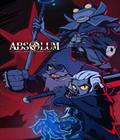
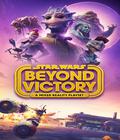
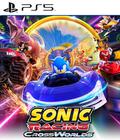
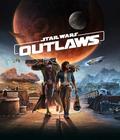
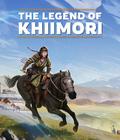




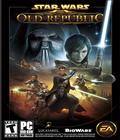 Star Wars: The Old Republic is a Free-to-Play MMO where you team up with friends online to fight in heroic battles between the Republic and Empire, exploring a galaxy of vibrant planets and experiencing visceral Star Wars combat.
Star Wars: The Old Republic is a Free-to-Play MMO where you team up with friends online to fight in heroic battles between the Republic and Empire, exploring a galaxy of vibrant planets and experiencing visceral Star Wars combat.








































